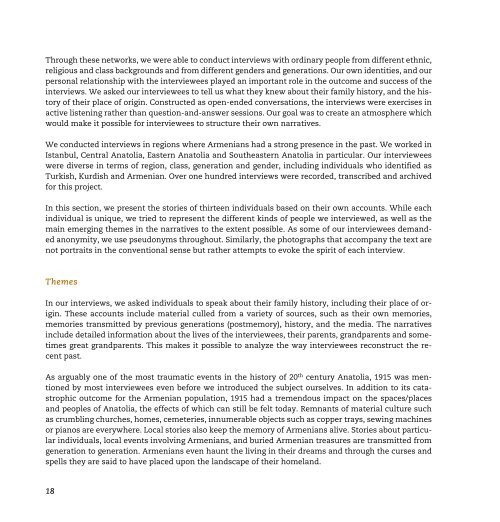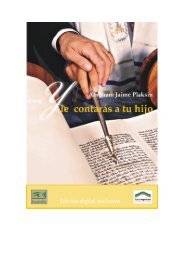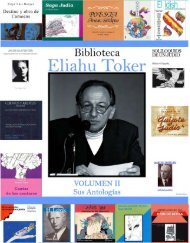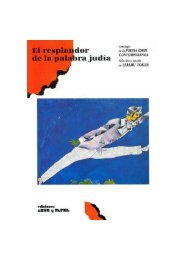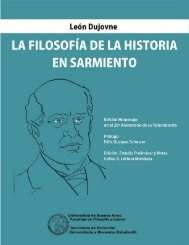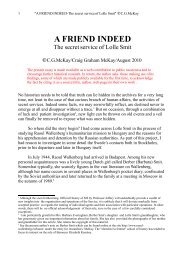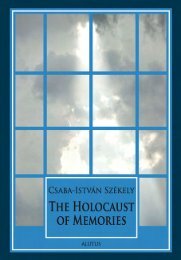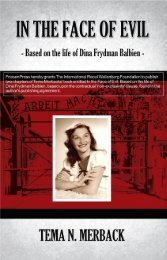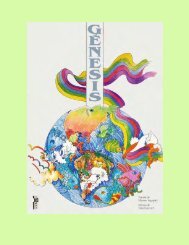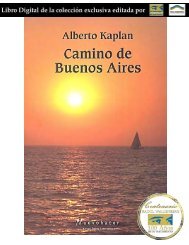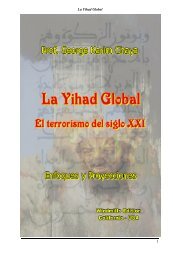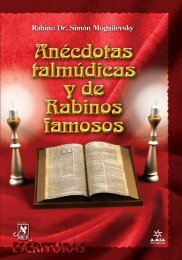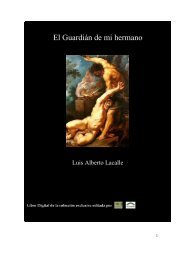Speaking to One Another - The International Raoul Wallenberg ...
Speaking to One Another - The International Raoul Wallenberg ...
Speaking to One Another - The International Raoul Wallenberg ...
- No tags were found...
You also want an ePaper? Increase the reach of your titles
YUMPU automatically turns print PDFs into web optimized ePapers that Google loves.
Through these networks, we were able <strong>to</strong> conduct interviews with ordinary people from different ethnic,religious and class backgrounds and from different genders and generations. Our own identities, and ourpersonal relationship with the interviewees played an important role in the outcome and success of theinterviews. We asked our interviewees <strong>to</strong> tell us what they knew about their family his<strong>to</strong>ry, and the his<strong>to</strong>ryof their place of origin. Constructed as open-ended conversations, the interviews were exercises inactive listening rather than question-and-answer sessions. Our goal was <strong>to</strong> create an atmosphere whichwould make it possible for interviewees <strong>to</strong> structure their own narratives.We conducted interviews in regions where Armenians had a strong presence in the past. We worked inIstanbul, Central Ana<strong>to</strong>lia, Eastern Ana<strong>to</strong>lia and Southeastern Ana<strong>to</strong>lia in particular. Our intervieweeswere diverse in terms of region, class, generation and gender, including individuals who identified asTurkish, Kurdish and Armenian. Over one hundred interviews were recorded, transcribed and archivedfor this project.In this section, we present the s<strong>to</strong>ries of thirteen individuals based on their own accounts. While eachindividual is unique, we tried <strong>to</strong> represent the different kinds of people we interviewed, as well as themain emerging themes in the narratives <strong>to</strong> the extent possible. As some of our interviewees demandedanonymity, we use pseudonyms throughout. Similarly, the pho<strong>to</strong>graphs that accompany the text arenot portraits in the conventional sense but rather attempts <strong>to</strong> evoke the spirit of each interview.<strong>The</strong>mesIn our interviews, we asked individuals <strong>to</strong> speak about their family his<strong>to</strong>ry, including their place of origin.<strong>The</strong>se accounts include material culled from a variety of sources, such as their own memories,memories transmitted by previous generations (postmemory), his<strong>to</strong>ry, and the media. <strong>The</strong> narrativesinclude detailed information about the lives of the interviewees, their parents, grandparents and sometimesgreat grandparents. This makes it possible <strong>to</strong> analyze the way interviewees reconstruct the recentpast.As arguably one of the most traumatic events in the his<strong>to</strong>ry of 20 th century Ana<strong>to</strong>lia, 1915 was mentionedby most interviewees even before we introduced the subject ourselves. In addition <strong>to</strong> its catastrophicoutcome for the Armenian population, 1915 had a tremendous impact on the spaces/placesand peoples of Ana<strong>to</strong>lia, the effects of which can still be felt <strong>to</strong>day. Remnants of material culture suchas crumbling churches, homes, cemeteries, innumerable objects such as copper trays, sewing machinesor pianos are everywhere. Local s<strong>to</strong>ries also keep the memory of Armenians alive. S<strong>to</strong>ries about particularindividuals, local events involving Armenians, and buried Armenian treasures are transmitted fromgeneration <strong>to</strong> generation. Armenians even haunt the living in their dreams and through the curses andspells they are said <strong>to</strong> have placed upon the landscape of their homeland.18


